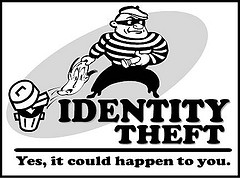by Dorothy C. Lee | Nov 27, 2015
 It’s the season to be jolly, but for many of us it’s the season to be overstressed as well. If getting ready for the Holidays is beginning to feel like a full-time job, start rethinking your holiday plans and consider streamlining, or even scaling back, some of your activities.
It’s the season to be jolly, but for many of us it’s the season to be overstressed as well. If getting ready for the Holidays is beginning to feel like a full-time job, start rethinking your holiday plans and consider streamlining, or even scaling back, some of your activities.
Following are some holiday survival tips that can help you save time and money, and preserve the holiday spirit in your heart.
- A few shopping strategies can help you save time and reduce the hustle-bustle stress. Shop early in the month and early in the day.
- Take advantage of free gift boxes and free or low-cost wrapping services. Wrapping presents can take as much time as shopping for them.
- Shop online and have the company wrap and ship gifts directly to recipients. Make sure you are shopping on a secure site. Look for the padlock icon.
- Simplify gift giving by choosing a theme. For example, buy a book or a sweater for everyone on your list.
- Suggest exchanging cards instead of gifts at the office.
- To keep packages sorted, wrap all of each person’s gifts in the same wrapping paper color or pattern.
- Instead of exchanging gifts with a friend you haven’t seen in a while, suggest a Dutch treat lunch date at a nice restaurant.
- Call a family meeting or, if family members are distant, arrange a conference call, or a mass text or email to discuss gift giving. You are probably not the only one who wants or needs to scale back on gifts. Strategies to discuss include drawing names so each individual buys a gift for only one person; giving family gifts; or giving gifts only to the children.
- Establish a spending limit and stick to it. If your holiday cash is limited, make gifts well in advance or think of creative ways to give of your time AFTER the holidays.
- Simplify your plans. You don’t need to decorate every room in your house or give gifts to everyone who sends you one.
- Reduce your entertaining requirements. Plan a themed potluck instead of dinner parties for which you are responsible for all the food. The same goes for family get-togethers. Ask each participant to contribute a dish for the meal.
- Keep your priorities straight: take time to think about what is really important to you; be realistic about how much you can do; don’t be afraid to say no.
- Setting priorities will help keep your schedule manageable. Draft a schedule that includes all the tasks you have to complete, how long you think each task will take, and when each needs to be done.
Most importantly, enjoy the holidays!
For further information contact:
Dorothy C. Lee, C.F.C.S.
UF/IFAS Extension Escambia County
3740 Stefani Road
Cantonment, FL 32533-7792
(850) 475-5230
dclee@ufl.edu
For additional information, go to the University of Florida Solutions for Your Life website, http://www.SolutionsForYourLife.com
by Shelley Swenson | Oct 30, 2015

Holiday Spending
The holiday season will soon be upon us. It seems to begin earlier each year placing more stress on both retailers and consumers. Retailers struggle to sell more products while consumers are subjected to a bombardment of messages via ads and media to encourage us to buy more! Through careful planning, the journey can be more emotionally and financially stable.
It is not about sacrifice; it is about opportunity to…..
- Make the commitment to be debt free from holiday expenses on January 1, 2016 through good planning.
- Create a spending plan and log each expense. Use cash and/or debit cards when at all possible. Money coming directly out of your pocket will likely make you think harder about your purchase.
- Stay motivated by finding a support system of people who have similar goals. Share your vision and ask for assistance and support.
- Think of ways to find alternatives to pricey presents. Holidays are about spending time with family and loved ones so don’t let gifts be the focus of your holidays or break your holiday budget.
- Track and assess your spending. Recommit daily to being debt free on January 1, 2016 from holiday expenses.
- Learn more about this subject with worksheets to assist with your planning at https://edis.ifas.ufl.edu/pdffiles/FY/FY140500.pdf FCS5267
by Elizabeth | Aug 29, 2015

Large Screen TV
Very few of us have money ready to cover an emergency, never mind the money for the larger purchases we’d like to make. This is why it’s so important to prioritize savings to cover both the items you need as well as those you want.
Whether you’re saving for a new computer or a car, the security deposit for an apartment or a house down payment, a little planning and an easy-to-maintain budget will be instrumental in making your big ticket purchase a savings reality. With these direct and easy steps, big ticket items don’t have to be limited to big dreams:
Set Your Goal. It’s easy to keep dreaming of the things you want or even things you might need, but making it a point to establish your big ticket item as an actual savings goal is a necessary first step in making the goal a reality.
- Do Your Research. Start with the most important question: how much is your large purchase going to cost? Some items, like a computer or a security deposit, will have a set dollar amount that you’ll need to save for, while other items, like a car or a home, will need to include associated costs for maintenance, insurance, and taxes/fees.
- Make a Plan. Once you know your goal and all of the costs associated with that goal, it’s time to dig into your BUDGET to determine how much you’ll be able to save each month. You might need to make some changes to your spending to make savings (or additional savings) happen. Dividing your goal’s costs by the amount you’ll be able to save will also let you know how long you’ll need to save. When you know these two items, head over to AmericaSaves.org to take the pledge and put your savings plan into action.
- Automate Your Savings. Start a good saving habit by automatically moving the predetermined amount into your savings account each month. Employer-based direct deposit can move the amount straight from your paycheck into your savings account or you can set up an automatic transfer through your banking institution. Regardless of which method you choose, be sure to keep your savings in a separate savings account to watch your money accumulate with interest (and the harder to access those funds, the better).
- Earmark windfall income. Depending on how long you’ve determined it will take to reach your savings goals, you may want to plan to move any additional unbudgeted income directly into savings. Receiving an end of year bonus? How about a tax refund? Since those funds aren’t a part of your established budget, you won’t miss the additional income by moving a portion of it into savings – plus, you’ll cut the time it takes to reach your goal!
To learn more about saving for a large purchase and take the America Saves pledge, visit AmericaSaves.org. Article adapted from AmericaSaves.org Saving for large purchases.
by Elizabeth | Jul 15, 2015

Do your homework on tuition costs before entering college.
The decision to go to college may seem to be a no-brainer, however, paying for the constantly increasing costs of college can be quite challenging. Given the increase of costs to attend a university, most prospective students are driven to borrow money to cover tuition and other costs associated with attending college. Like everything that requires large sums of money, planning and saving is key. Lack of financial planning may result in huge debt loads among young adults aspiring to obtain a college education. Personal financial planning for college tuition should begin as soon as a person enters high school or even earlier. Students should be asking for assistance from counselors who can help them decide both their major in college as well as how to pay for the degree. Doing this earlier will help students become focused and not change majors, which may result in taking more time and classes to graduate, thus requiring more financial assistance.
Before signing any type of financial documents students need to READ the fine print and calculate the cost of borrowing. Here are a list of websites to help you navigate the cost of attending college.
http://www.collegedata.com on this site you can type in a college name and find out the cost of attending that college. By doing this you can decide whether an in-state or out of state college is right for you financially.
The Florida Department of Education, Office of Student Financial Assistance (OSFA) http://www.floridastudentfinancialaid.org/FFELP/ffelp_homepage.html helps you determine what financial aid you qualify for.
The Consumer Financial Protection Bureau (CFPB) website http://www.consumerfinance.gov/students/knowbeforeyouowe/ gives you access to worksheets that you can fill out to compare the different loans available to attend a college.
Armed with information from these sites, you can make an informed decision based on affordability. Graduating with little or no debt at all is ideal, however, not all of us have that opportunity. Therefore, a little homework on tuition costs before entering college may result in less debts upon graduation.
by Judy Corbus | Feb 14, 2015

Photo credit: IFAS Communication Services
Do you have a high school senior in your life in the near or not-so-near future? If so, it’s never too early to begin planning and preparing for the expenses associated with senior year. For starters, here are some typical expenses:
- Class ring – While this may be purchased during the sophomore or junior year, the cost can amount to several hundred dollars, depending on the material, design, and vendor.
- Senior pictures – Many photographers offer portrait packages featuring shots taken at off-site locations in addition to the traditional black drape and tux headshots for the yearbook.
- Yearbook – In addition to the average base price of $100, many schools offer ad space for purchase to mark your child’s special year. Prices can run from $25 for a quarter-page space to $200 for a full-page scrapbook-type ad.
- Class dues – Many schools charge students annual dues for various expenses associated with their particular grade level.
- Cap and gown rental, graduation announcements, thank-you cards
- Test fees – If your child will be taking the SAT, ACT, or other placement test, be prepared to shell out $50 or more per each test sitting. Prep classes will be an additional cost.
- College application fees – these generally run $35 or higher per school.
- Dances and Prom – Tickets, corsages, the dress, shoes, hair and makeup, tux rental, limousine rental, and dinner can add up quickly; the average cost of prom in 2014 was approximately $1,000.
- Class trip – Whether it’s a trip to a theme park or a white-water rafting adventure, factor in the costs of transportation, lodging, meals, admission tickets, and spending money for the excursion.
As you can see, senior year expenses can add up quickly! To ease the burden on the family budget, plan ahead. First, contact your child’s school for a list of anticipated expenses. Next, sit down with your high schooler and discuss the expenses he or she is likely to have. Decide together which are needs and which are wants – many items are “nice to have” but not necessary and there may be some items, like a class ring, that are of no interest to your child.
Set a realistic budget for the year and discuss ways in which your child can contribute through, say, babysitting or a part-time job. Explore alternatives to reduce costs – enlist a “shutterbug” friend to take photos, shop consignment stores for prom wear, print your own graduation announcements, purchase inexpensive thank-you cards. If your child is just starting high school, you can set up a special savings account now and contribute regularly so you are prepared when that time finally arrives.
With planning, senior year can be a very special and memorable time in your family’s life without breaking the budget. For more information on setting up a budget, contact your local UF/IFAS Extension Office or visit http://edis.ifas.ufl.edu/topic_budgeting.
Source: National Endowment for Financial Education, “Costs Heavy on Road to High School Graduation – Plan Ahead to Manage Expense of Child’s Senior Year’” http://www.nefe.org/press-room/news/senior-costs-2011.aspx
by Kristin Jackson | Feb 9, 2015

Photo by: White,T. (N.D.) Identity Theft Protection. Retrieved 9 February 2015 from http://goo.gl/46HkDp
While the commercials about identity theft maybe funny, identity theft is no laughing matter. Identity theft occurs when someone’s personal information is used to access money. According to the national crime and victimization survey it is estimated that identity theft cost Americans approximately twenty-four billion dollars in 2012. In fact, in the time it will take the average person to read this first paragraph, research estimates there will be fourteen new identity theft cases or one victim every two seconds (Javelin Strategy & Research in 2013).
In 2013, the Federal Trade Commission ranked Florida as number one with regard to fraud complaints in the United Sates. The top reason for fraud in Florida was listed as stealing social security numbers to collect phony tax returns or to collect another government benefit. UF IFAS Extension Family & Consumer Sciences has some tips to help you be proactive when it comes to protecting your identity during tax time.
- Choose a reputable tax preparer or consider visiting a Volunteer Income Tax Assistance (VITA) Site.
- Only carry your social security card and tax documents to and from the tax site. When you are not using these documents, put them in a safe place at home.
- Check your credit report frequently. You can obtain one free report from each of the three credit bureaus every 12 months.
Identity theft is no laughing matter. Use the steps above to help protect your personal information. If you believe that you have been a victim of identity theft report incidents to the Federal Trade Commission at 877-738-7338. For more information on identity theft or for help reading your credit report contact your local UF IFAS Extension Family & Consumer Sciences agent.
Additional Resources:
Federal Trade Commission (2008). Building a Better Credit Report
Federal Trade Commission (N.D.). Identity Theft. Retrieved
Gutter, Elemore, Mountain (2015). You and Your Credit: Credit Reports
References:
Fuchs,E. (2013). Identity Theft Now Costs Far More Than All Other Property Crimes Combined. Retrieved 9 February 2015 from http://www.businessinsider.com/bureau-of-justice-statistics-identity-theft-report-2013-12
Frohlich, T. (2014). Top state with the most fraud complaints. Retrieved 9 February 2015 from http://www.usatoday.com/story/money/business/2014/03/08/states-with-most-fraud-complaints/6173855/
Javelin Strategy & Research (2014). 2014 Identity Fraud Report. Retrieved 9 February 2015 from https://www.javelinstrategy.com/uploads/web_brochure/1405.R_2014IdentityFraudReportBrochure.pdf
 It’s the season to be jolly, but for many of us it’s the season to be overstressed as well. If getting ready for the Holidays is beginning to feel like a full-time job, start rethinking your holiday plans and consider streamlining, or even scaling back, some of your activities.
It’s the season to be jolly, but for many of us it’s the season to be overstressed as well. If getting ready for the Holidays is beginning to feel like a full-time job, start rethinking your holiday plans and consider streamlining, or even scaling back, some of your activities.




